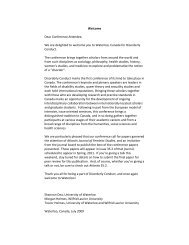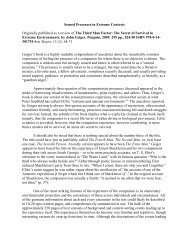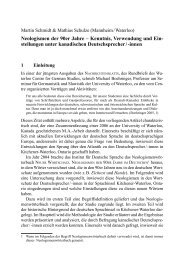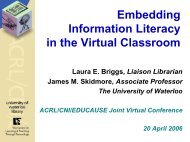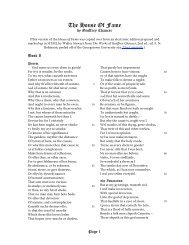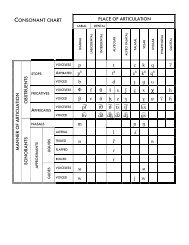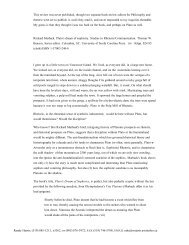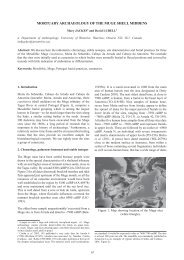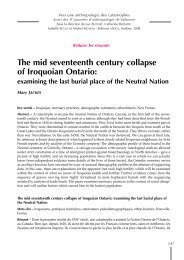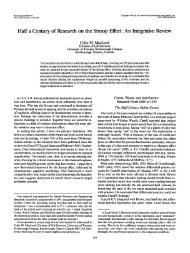Individual Differences in Learning and Memory: A Unitary ...
Individual Differences in Learning and Memory: A Unitary ...
Individual Differences in Learning and Memory: A Unitary ...
You also want an ePaper? Increase the reach of your titles
YUMPU automatically turns print PDFs into web optimized ePapers that Google loves.
532 COLIN M. MACLEOD<br />
A%P *-------------------------, ,<br />
Pattern<br />
,<br />
Recognition I<br />
SHORT-TERM<br />
RESPONSE<br />
GENERATION<br />
FIG. 1. The prototypical two-state model of memory.<br />
<strong>in</strong>cluded as one of the available control processes. This change reflects<br />
the recent focus on process<strong>in</strong>g (as opposed to structural) variables <strong>in</strong><br />
learn<strong>in</strong>g <strong>and</strong> memory (cf. Craik & Lockhart, 1972).<br />
With this type of model <strong>in</strong> m<strong>in</strong>d, one can beg<strong>in</strong> to frame questions about<br />
<strong>in</strong>dividual differences <strong>in</strong> specific memory functions. A partial list of such<br />
questions might <strong>in</strong>clude:<br />
(1) Do people differ <strong>in</strong> the capacity of their sensory registers?’<br />
(2) Is attentionai allocation ability a source of <strong>in</strong>dividual differences? Does the<br />
speed of pattern recognition vary between <strong>in</strong>dividuals?<br />
(3) Can some people use STS more efficiently than others? Do some <strong>in</strong>dividuals<br />
have a larger set of available control processes?<br />
(4) What sorts of control processes should be used to accomplish optimal transfer,<br />
<strong>and</strong> do these differ from person to person?<br />
(5) Are <strong>in</strong>dividual differences <strong>in</strong> LTS primarily <strong>in</strong> the episodic or the semantic<br />
component? Does the efficiency of retrieval (<strong>and</strong> perhaps the utility of various<br />
cues) represent a dist<strong>in</strong>ct ability?<br />
Clearly, these are all possibilities <strong>and</strong>, with a little imag<strong>in</strong>ation, one can<br />
generate numerous other c<strong>and</strong>idates. Instead, let us look at some of the<br />
research this sort of model has generated, restrict<strong>in</strong>g discussion to post-<br />
perceptual process<strong>in</strong>g.<br />
1 Although I am omitt<strong>in</strong>g any discussion of <strong>in</strong>dividual differences <strong>in</strong> preattentional pro-<br />
cess<strong>in</strong>g, there is some evidence that this is an area worth pursu<strong>in</strong>g. For <strong>in</strong>stance, Snow<br />
(Note 12) discusses several studies of mask<strong>in</strong>g phenomena <strong>in</strong> iconic memory which clearly<br />
demonstrate <strong>in</strong>ter-subject differences.



